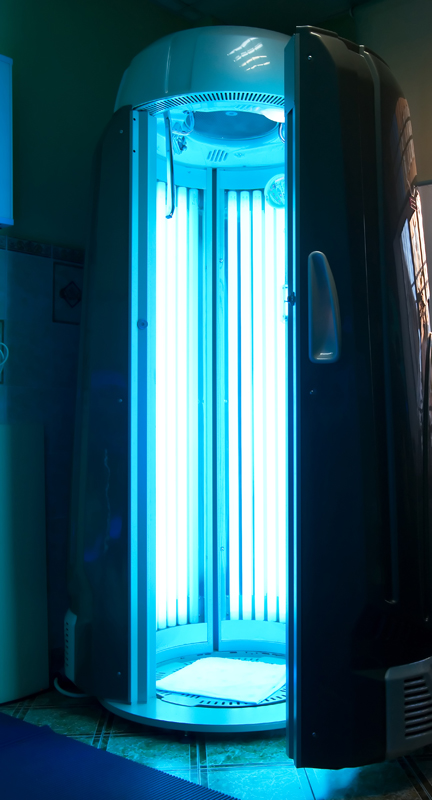Blocking UV burns will save lives

A recent controversial bill divided state legislatures recently. It proposes to ban minors from using tanning beds. It’s definitely a bold step in the right direction.
Currently 11 states including Vermont, Illinois, Texas, California and Nevada have banned tanning for minors, and 31 states require parental permission. In Queensland, Australia, a ban was placed on all tanning beds in 2013, no matter the age of the user. Brazil passed a similar ban in 2003 for minors, but the bill was revised in 2009 to include all ages.
Tanning became popular in the 1940s as a sign of wealth and prosperity. (Only the rich could jetset onto an island for a tropical vacation). It’s hard not to like at the beginning — the feeling of the warm sun (or sun lamp) beating down on your skin. It increases vitamin D production, a vitamin that many have a deficiency of. The tanning process releases endorphins, making the experience very pleasurable and almost addicting. It creates an illusion of being thinner, a desirable trait.
But tanning isn’t all that it’s cracked up to be. Proponents of tanning argue that as long as users aren’t getting sunburned, there is no danger. They couldn’t be more wrong. In fact, a tan is essentially a sunburn. It has the same effect and damage as a blistering sunburn, even if a tanner doesn’t have the painful symptoms.
Using an indoor tanning bed increases the risk of melanoma drastically. In fact, the Skin Cancer Foundation cites that 90 percent of all skin cancers are associated with exposure to ultraviolet (UV) radiation. An extravagant amount, right? Exposure to UV radiation causes mutations within DNA. Excessive UV exposure causes skin to wrinkle, age and sag much faster. “Up to 90 percent of the changes commonly attributed to aging, including wrinkles, leathery skin and brown spots” are due to UV exposure, according to the Skin Care Foundation.
The fight against tanning beds shouldn’t be a discussion of “freedom.” It should be a discussion of protecting ourselves from cancer.
Alright, maybe banning tanning for minors isn’t the answer. But as long as tanning is a popular cosmetic procedure, there need to be warnings in place. That could be anything from a social media campaign to heightening awareness about the dangerous effects of tanning.
If we want to protect teens from aimless skin damage, point them in the safer direction of sunless self-tanner — an easy alternative for achieving the bronzed glow of their dreams. Or better yet, stop focusing on skin color. As Sarah Brown, Vogue’s Beauty Director, said, “A healthy glow does not mean a tan, and I think that’s what we have to clear up. A healthy glow is your skin tone, glowing.”
In the long run, it doesn’t really matter. No tan is worth your life.






You must be logged in to post a comment Login